Is Kangaroo mother care a substitute to conventional incubator care for premature babies?.
Hello lovely people of this wonderful hive community, am here again with another important topic which I know will benefit everyone here, and I encourage you all to patiently go through this post because whether single or married, you will learn something from it.
I know some of us must have heard about kangaroo care while some others have not, but not everyone knows what it's all about, same goes with incubator care and prematured new borns. So I will try my possible best to explain what they mean and how this two types of care can substitute each other.
Most individuals are born prematured but the truth is that you will never know once they are matured. The difference is just that they matured or developed further outside the uterus.
So in simple terms, preterm babies ( prematured) just as the name goes, are new borns given birth to before term which is usually 37 weeks of pregnancy. These newbies are grouped into various levels;
the Early preterm (below 7 months), the middle preterm babies (babies between 7 to 8 months ) and then the late preterm ( which are between 8months to 9 months).
This grouping is usually based on their weight as well as their age. Because they didn't stay till term in utero, most of their organs and system are not matured ranging from the respiratory system, cardiovascular system (heart and blood vessels), gastrointestinal system etc and this is why extra care and attention is required so as to sustain and keep them till they mature properly to prevent unnecessary complications.
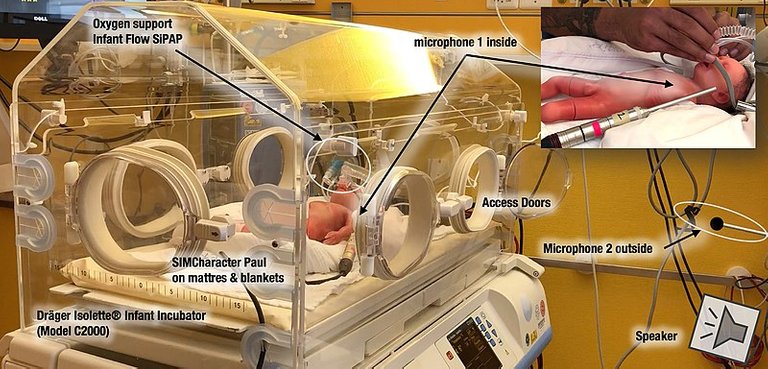
A preterm baby inside an incubator
Least I forget, some of the risks or complications associated with prematurity includes:
Inability to maintain or retain warmth and this is due to the fact that they lack adequate adipose (fatty)tissues to provide insulation for them and so they easily catch cold.
They are prone to infections due to their poorly developed immune system, that is why extra care is required in nursing them.
Difficulty in digestion of food, due to premature gastrointestinal system, which could result to gastrointestinal problems like NEC (Necrotizing Enterocolitis) which most times they don't survive after the surgery.
Respiratory problems like RDS (Respiratory distress syndrome) due to the absence of surfactants which play major role in lung expansion which is vital for the process of respiration to be successful without aid.
Poor sucking reflex which most times leads to delayed breast feeding.
Poor growth and development because of the poor sucking reflex which makes feeding difficult.
So this is the point where the term kangaroo care and incubator care comes in.
Kangaroo Care
Before I continue, I will like to briefly explain a little about incubator care and what it entails. In order to render this incubator care, an incubator machine has to be in place and it is
an apparatus for maintaining optimal conditions for growth and development, such as temperature and humidity, especially one used in the early care of premature infants
It's commonly described as an artificial womb due to its role in providing warmth as well as appropriate atmosphere for the survival of the preterm baby when nursed in it just like inside the uterus(womb).
At this stage of life, the incubator is seen as the home of the baby and so adequate attention is paid by the incubator nurses to ensure that it is always clean and free from disease causing microbes. In addition,the temperature as well as light and humidity is set to the point suitable for the baby and then monitored closely to prevent fever which could result from high temperature from the machine.
So back to our main topic
KANGAROO CARE(SKIN TO SKIN CONTACT)
As the name goes, it was coined based on the way the Kangaroo 🦘 (a marsupial)carries its young in its pouch to nurse it as well as provide warmth and protection.

A kangaroo carrying it's young one in its pouch to provide warmth
Kangaroo care, named for the similarity to how certain marsupials carry their young, was initially developed in the 1970s to care for preterm infants in countries where incubators were either unavailable or unreliable,it is a technique of newborn care where babies are kept chest-to-chest and skin-to-skin with a parent, typically their mother and occasionally their father.
Just as stated, the main purpose for this method of care in this case to help the prematured baby to improve in its development in an environment similar to the mother's womb. Usually, kangaroo care which is commonly called kangaroo mother care (KMC) when provided by the mother, is done for a period of 6months especially for preterm babies to allow them a considerable length of time for adequate development.
Let me also point out to us that kangaroo care can be done or is encouraged for all new born babies both the matured and prematured, to promote bonding between them and their parents, but majorly premature newbies derive so much benefits from it and in some cases where the babies are twin, it can as well be done at the same time, with both babies on the skin of the parent.
To further clarify us, kangaroo care is quiet different from baby carrying in which the baby and mother in this case are putting on clothes and then the baby is suspended either at the front or the back of the mother through the help of a Carrier, a sling or a material.
This unique type of care (KMC), Is commenced immediately after birth generally for all babies but in some cases, the preterm babies are moved to the special care baby unit (SCBU) which can also be called a nursery for immediate attention especially if they require oxygen therapy, or
are seen to be jaundiced and require phototherapy during which period the baby will be nursed inside an incubator, for some time to gain stability before kangaroo care is now commenced. Also, kangaroo care can be done at the same time with the incubator care that is incubator care can be interrupted for some hours for kangaroo care to be provided for the same baby usually in the nursery section of the hospital.
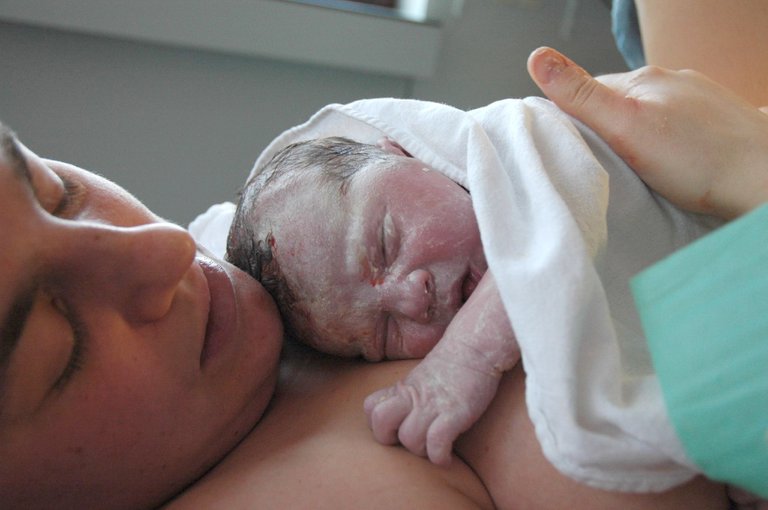
Mother providing kangaroo care immediately after delivery even before the baby is cleaned up
HOW IS KANGAROO CARE DONE?
Just as I stated earlier, this care can either be rendered by the mother or father although it's done mostly by the mother. So inorder to establish this,the following steps should be taken:
Step 1: the baby should only be worn a diaper and a head gear or cap, while the parent also should leave their upper body (chest) bare.
Step 2: the baby should be placed skin to skin, chest to chest with parent in an upright position, between the breast of the mother, with the head placed on one side to allow for easy breathing during the process.
Step 3: a piece of material or showel is used to hold the baby firm to the mother to prevent the baby from slipping from the body and this is done by tying it round the body of the parent and baby. Another option is to advice the parent to put on a shirt that can be buttoned or zipped up in the front while the baby remains inside the body.Usually this Kangaroo care can last for hours and should be done often so as to achieve it's various aim.
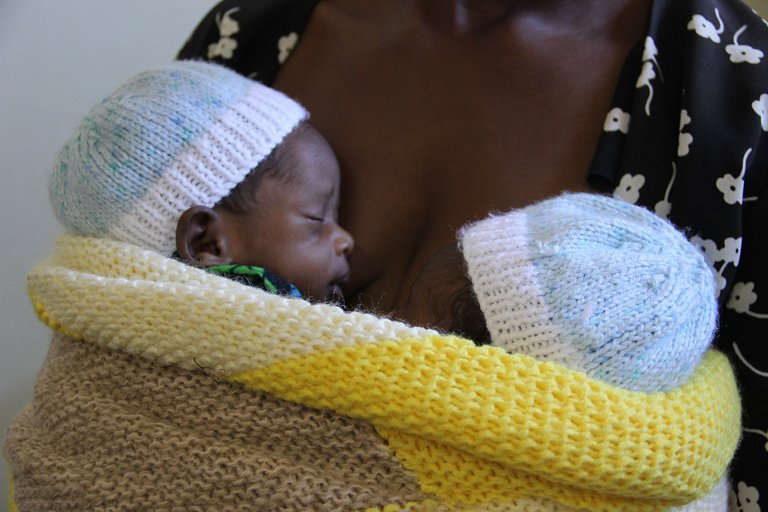
mother providing kangaroo care to her twin babies using the above method
Kangaroo care has 3 major components that makes it extraordinary and they are the kangaroo position ( which is the way the baby is placed skin to skin in an upright manner to the parent), the kangaroo nutrition ( this involves early establishment of breastfeeding in the new born that is initiated through the process of this care) and finally the kangaroo discharge ( this simply means that this kangaroo care helps in facilitating early discharge from the hospital and before the discharge,the baby is expected to attain a particular weight of atleast 1.5 to 1.8kg, subsequent appointment will be booked for proper follow up care and breastfeeding or cup feeding must be established before discharge is considered).
Before I continue, I would like to make it clear by answering the main question that introduced this topic by saying that kangaroo care is a better substitute for incubator care especially in underdeveloped as well as developing areas where the incubator care is not reliable, which could be due to electrical issues or any other problem that can interrupt the use or function of the incubator.
I know you have been longing to know the roles or importance of this special care(KMC) in the growth and development of the prematured baby, alright,
Some of the benefits of Kangaroo care includes:
• Helps in early establishment of breastfeeding: usually, early commencement of this care stimulates early production of milk as well as breastfeeding.
Mechanism
When the preterm baby is positioned on the chest of the mother between both breast, this helps the baby in easily locating the breast by moving the mouth, sniffing and licking the breast, it gradually locates the nipple and begins to suckle it gently though the force is not yet strong as the sucking reflex at this stage is not well developed yet. The constant suckling of the nipple stimulates the milk ejection reflex which results to the production of enough breast milk for the baby feed on as well as help in relieving the pressure from the mother's breast.
• Provides protection against infections of any kind: these premature babies acquire immunity from the mother and this is through the first breast milk that comes out known as the colostrum. This colostrum though small and yellowish in color, it contains a great deal of nutrients as well as antibodies, necessary to help protect the baby from infections by enhancing the immunity.
• Promotes growth and development as well as weight gain: kangaroo care encourages rapid growth and development and this is due to the fact that early breastfeeding is established and as the baby is feeding adequately and constantly on the breast milk, it gets all the nutrients it requires to grow and mature appropriately. Also adequate rest during the care encourages sleep for the baby which also allows for adequate all round development.
• Improves easy digestion of food: as I mentioned earlier, the gastrointestinal system of a prematured baby is not fully developed and so the best food for them at this stage is breast milk as this is the easiest food they can digest unlike other breast milk substitute (processed milk) which may cause serious indigestion and stomach upset with other associated complications like Necrotizing Enterocolitis (NEC) . So through Kangaroo Mother Care, the baby starts feeding on breast milk early enough there by improving digestion and preventing complications.
• It promotes bonding/ attachment: kangaroo care helps in establishing a strong bond or connection between the baby and parent(s) and by so doing the mother or father will become sensitive enough to the needs/cues of the baby as well as being able to identify when the baby is in danger because they are emotionally attached.
• Promotes warmth and regulates body temperature: normally the adipose tissue in a prematured baby is not much and this usually predisposes the baby to hypothermia (excessive cold) because the body is not able to retain heat to keep warm rather it loses the heat to the environment. So as a way of balancing up this whole situation, through kangaroo care adequate warmth is supplied from the mother or father to the baby through the process of conduction to maintain a stable body temperature inorder to compensate for the insufficient fatty tissues.
The parent's stable body temperature helps to regulate the neonate's temperature more smoothly than an incubator, and allows for readily accessible breastfeeding when the mother holds the baby this way.
• Helps in reducing cry, there by promoting adequate sleep: babies generally are usually known to cry most times and this usually consumes a lot of energy which they would have channelled into their growth development, but when they are placed on the body of their parents directly,it makes them relaxed and calm and most times they sleep off during the process. This sleep also help in their all round development and well being.
• Reduces the length of time spent in the hospital: KMC when commenced in the hospital with incubator care, facilitates the growth and development of the baby and most times these preterms are seen to be gaining weight which is one of the indications for discharge in addition to being able to feed properly.
• Promotes Sense of satisfaction and achievement on the part of the parents: the parents of the baby usually feel happy and fullfiled knowing that they are able to care properly for their baby as well as keeping them safe.
Kangaroo care is effective and that's why humans copied it from the way the animal kangaroo cares for its young. Though currently most people are not aware of it and it's importance because most health facilities are not practicing yet, but it's really worth adopting both at home and in the hospital.
So I think I have said enough already on this and therefore will draw the curtain at this point. Thank you for patiently reading through this post,I hope it was beneficial and impactful and I anticipate positive response and inputs as well as support from everyone here based on this topic. Stay cool and anticipate more posts from me.
Reference
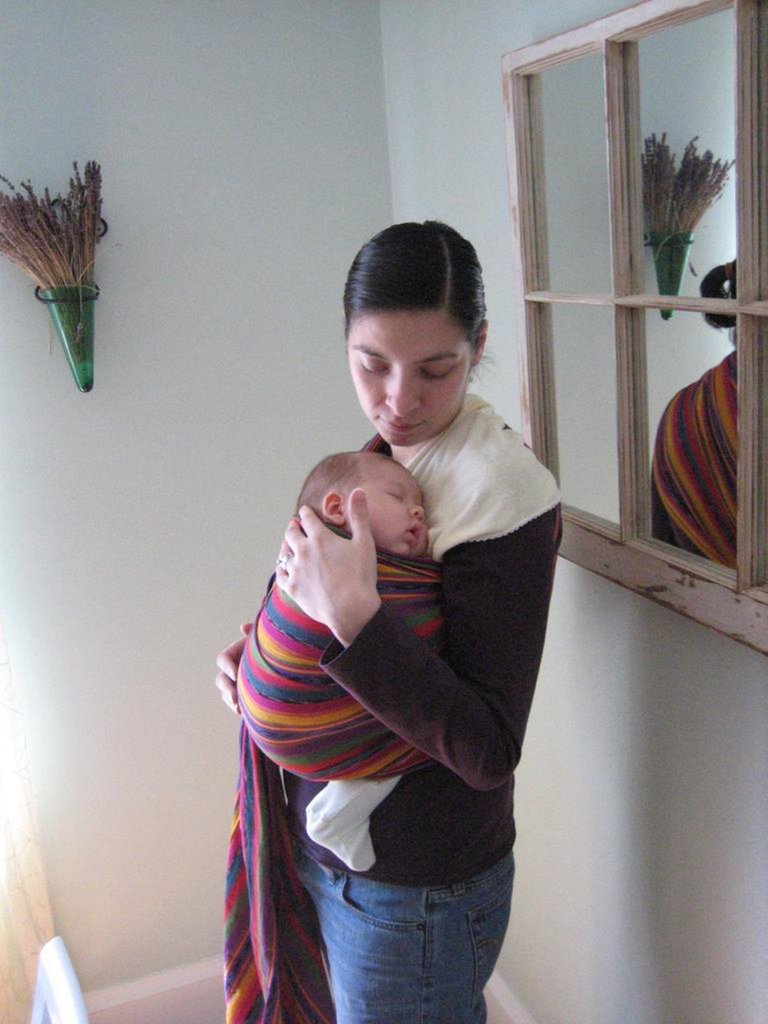
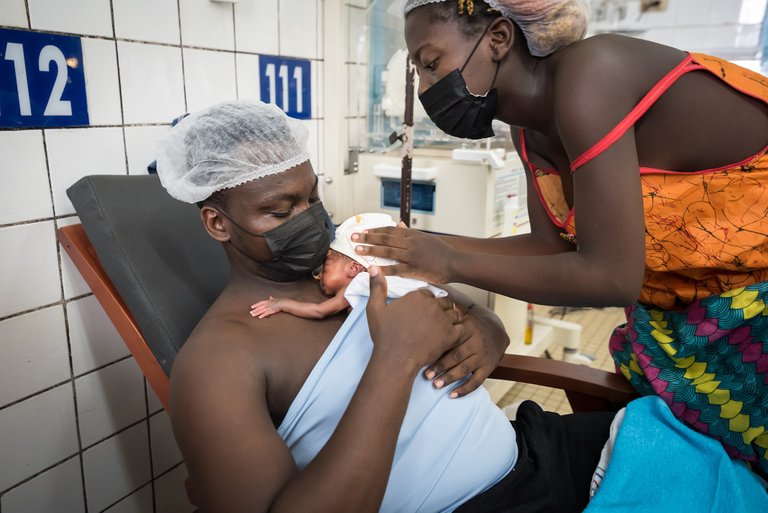
Congratulations @nazom! You have completed the following achievement on the Hive blockchain and have been rewarded with new badge(s):
Your next target is to reach 50 upvotes.
You can view your badges on your board and compare yourself to others in the Ranking
If you no longer want to receive notifications, reply to this comment with the word
STOPCheck out the last post from @hivebuzz:
Support the HiveBuzz project. Vote for our proposal!
Thanks for your contribution to the STEMsocial community. Feel free to join us on discord to get to know the rest of us!
Please consider delegating to the @stemsocial account (85% of the curation rewards are returned).
You may also include @stemsocial as a beneficiary of the rewards of this post to get a stronger support.
I didn’t know about kangaroo care at all, most probably because my kids were all born in due time. Thanks a lot for this informative post. It allows me to learn a few things.
In fact, the pictures look like something that is done quite often for normal babies. I have indeed seen many carrying their babies in a kind of big scarf. We actually also did it with both our kids when they were small (and even not that small anymore... my back has still pain just thinking about it). Of course, in that case it was not a skin-to-skin contact as we were all wearing clothes. I didn’t know this was something done for premature children.
In my opinion, the main advantage o this method is, as you mentioned, that we run off from the hospital earlier. And the earliest is always the best (if it can be done safely) ;)
Cheers!
I am really happy you picked something from this post. Actually this kangaroo care can be given to matured babies to promote that warmth and bonding between the baby and parents as well as establish breastfeeding early both in the hospital and at home, just that more importance was emphasised for preterm based on the topic under discussion. Thank you very much for your input am grateful.
I agree. The skin-to-skin and close-to-close connection is important, and also something very pleasant (which I experiences myself with my boys, except for the breastfeeding part for obvious reasons).
Have a good day!
Yeah thank you and you too.